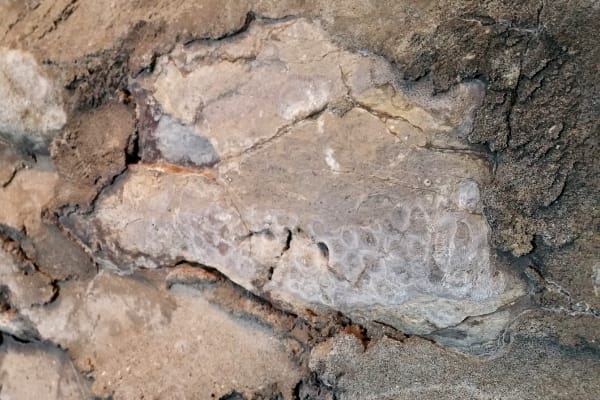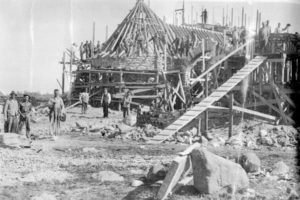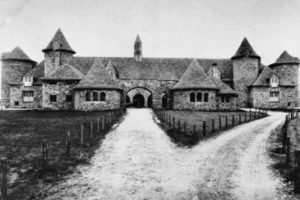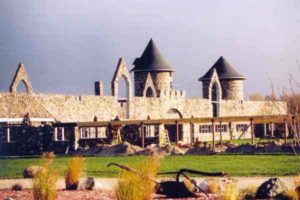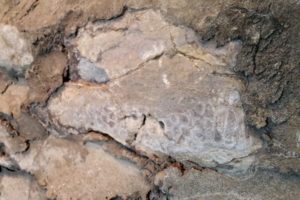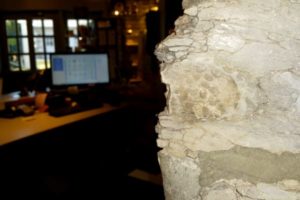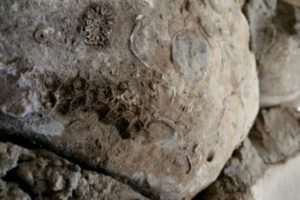The year is 1918. A large group of Northern Michigan stone masons and apprentices have been gathered to build Loeb Farms, styled after french chateaux and farms. The masons were paid the princely rate of $1.50 per hour, while the apprentices were paid the more modest $0.50 per hour. The stone masons placed each field stone by hand to form the cow barn, horse barn, main residence, and all the other structures on the property. The stone they toiled with came from the property itself and from surrounding farms, chunks of rock gathered from field clearing. Many different types of rock were found in the piles, including granite and limestone. Farm-cleared soils were subject to deeper freezing than untouched land, so the frost-churned soil was constantly presenting local farmers with new building material. The chunks of rock were deposited by the glaciers that once covered Michigan and retreated through the ice ages. Greys, browns, reds, and hints of green could be found, but occasionally a stone mason would find an odd stone with a small hexagonal pattern unlike any other. Little would they know that 47 years later, in 1965, this small coral fossil would be named the state rock of Michigan.
The Petoskey stone, or hexagonaria percarinata, was a prehistoric fossil that thrived in the saltwater sea of the Devonian period. When earth’s plates moved, the land that we know as Michigan was pushed north to the 45th parallel and above sea level, drying out the sea beds. Later glacial action scraped the surface of the land and spread debris over the northern Lower Peninsula of Michigan. Large concentrations of this specific coral were deposited in the Petoskey area, giving it the common name of Petoskey stone.
While not as common as granite or limestone, the Petoskey stone found its way into fields and was cleared by farmers to make barns and houses. The stonemasons that built the Castle had an artistic side and purposely placed more decorative stones where they could be viewed. To date, we have found at least 6 visible Petoskey stones mortared into the walls of the Castle.
Rock hunters come from all over the US to find these coral jewels on the shores of Lake Michigan. After the ice leaves the lake is considered the best time to hunt for the rock. Seekers can also look to the Castle walls for a glimpse of these elusive stones. For a sure find, visit the Castle Gift shop where you can purchase jewelry, wine stoppers, and even wine glasses created with the state stone.
